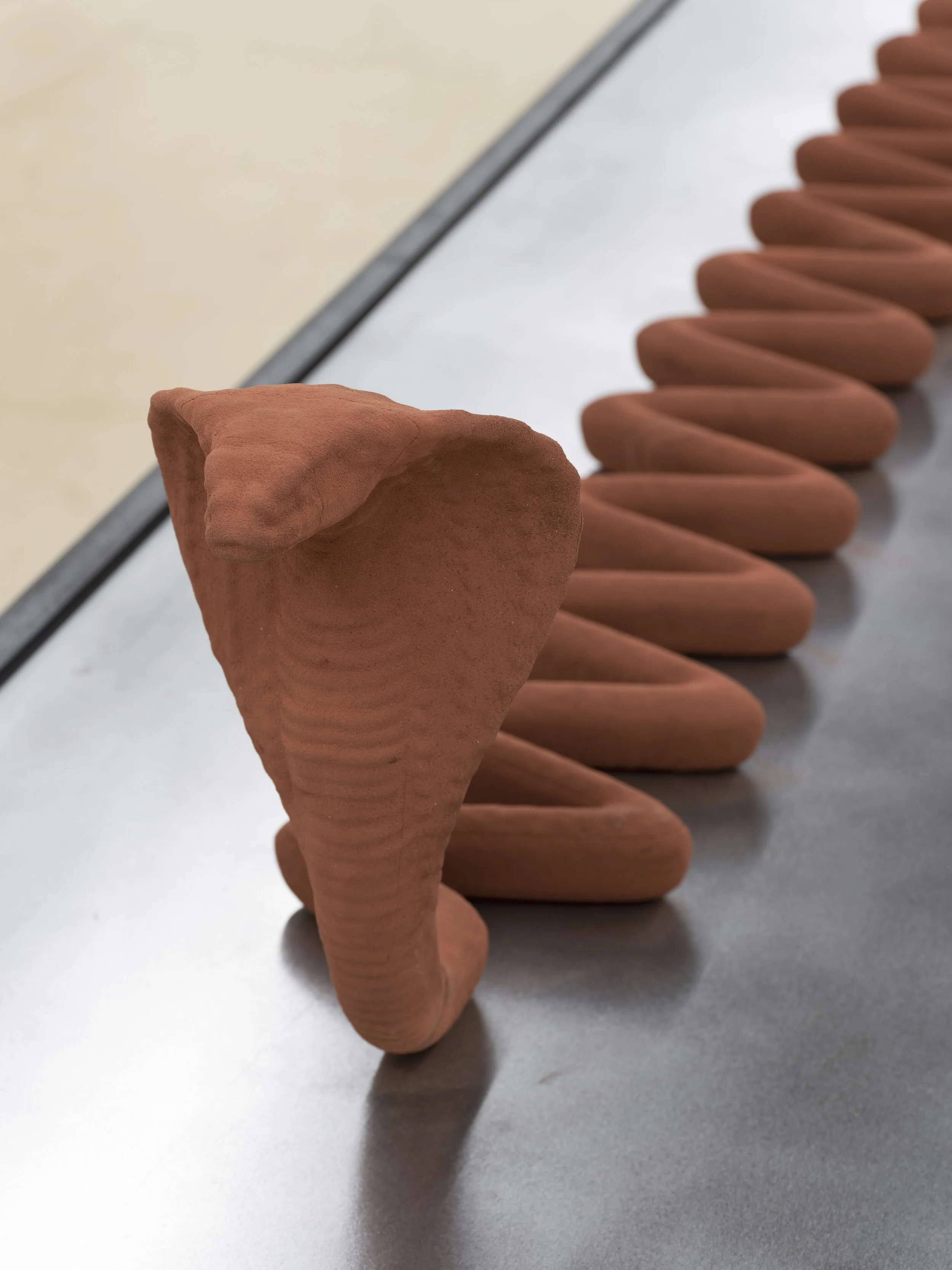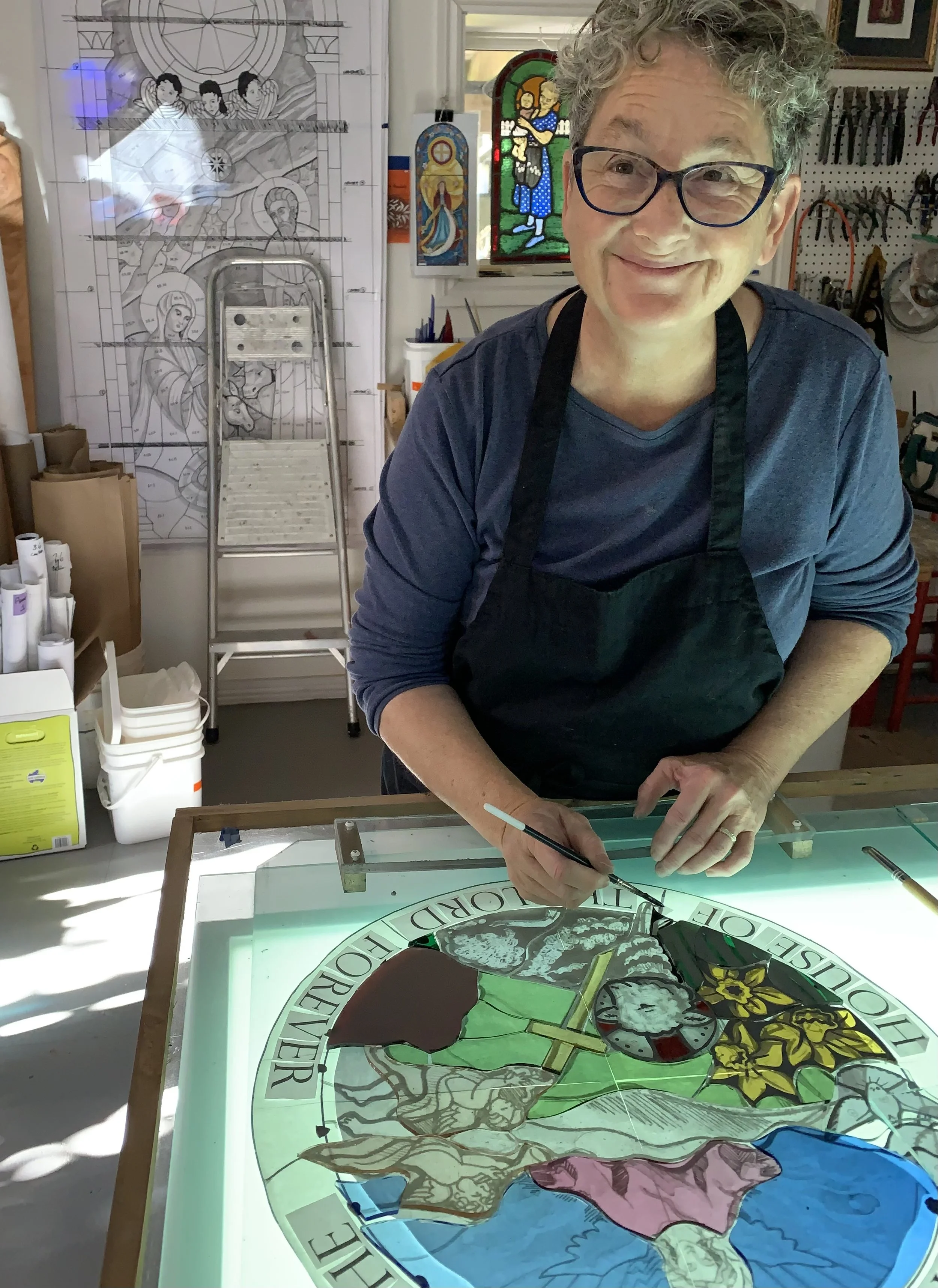Azza El Siddique
Azza El Siddique, Dampen the flame; Extinguish the fire (Installation), 2022. Photo: Sebastian Bach. COURTESY OF THE ARTIST AND HELENA ANRATHER, NEW YORK.
The visual centrepiece of artist Azza El Siddique’s recent exhibition Dampen the flame; Extinguish the fire was a rust-coloured cobra with two heads and a zigzag body. Set within a steel framework with unfired clay vessels, flower-shaped incense and a slow-drip irrigation system, the cobra contributed to an air of ritual and reflection evocative of a temple or funerary site. El Siddique’s double-headed cobra showcases how her process and choice of materials — specifically mould-making, 3D printing and clay — inform the internal logic of her practice.
Azza El Siddique, gate of flaming-front, hidden back, 2022. Dry stone, iron oxide, 35.5 x 162.5 x 20 cm (Snake), 77 x 244 x 62 cm (Plinth). Photo: Sebastian Bach. COURTESY OF THE ARTIST AND HELENA ANRATHER, NEW YORK.
El Siddique’s practice is informed by her Sudanese heritage and extensive research she conducts into ancient funerary practices. Born in Khartoum and raised in Vancouver, B.C., she explores memory, entropy and transformation through a densely packed network of both highly personal and broadly cultural imagery. Describing her research practice as informed and influenced by archeology, the artist navigates absence and loss by harnessing not just specific and evocative imagery, but also certain processes and materials that expand the work and reveal a logic that emerges through making.
Azza El Siddique, Memory of One (detail), 2020. Clay, expanded steel, steel, rust, water. COURTESY GARDINER MUSEUM.
Seeking to evoke a memory or an idea through a generalized object type rather than a specific artifact, El Siddique typically sources vases, statuettes and other forms in her installations through thrift stores and websites like eBay. And in the past, she would make a mould off the form and then cast it, removing a degree of specificity and detail in both the physical characteristics of the object and in the associations it evokes.
This article is an excerpt.
Read the article in full in the Spring/Summer 2023 issue of Studio Magazine.










